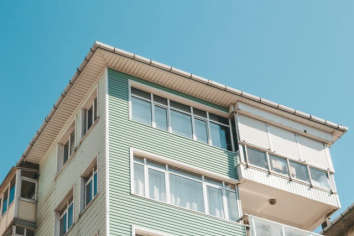
The causes of house floods are many and different. The list includes natural disasters, burst pipes of the property's water supply system or sewage system, and broken water boilers, to name the main ones. No matter what the cause of the problem is, you must immediately take a set of measures for water damage repair and for restoring your home. Here they are.
Go back inside only if it's safe - In case your house has suffered major structural damage, you should stay put until you have confirmation that it is safe to enter. structural repairs Before you go inside, you must ensure that the power supply and the water supply to the house have been terminated. Since the water may be contaminated, you must wear protective clothing and a mask, even if it has subsided. Another thing to keep in mind is that the security of your property is your responsibility, no matter whether you can enter or not.
Get in touch with your insurer - The sooner you do this after the flooding the better. You should know that if water repair works begin before you report the event and document the damage, you may not be able to receive compensation. When speaking to the insurance agent, take down notes of what you have to do to make a claim. Usually, you will be asked to take photos of the damage caused. You need to photograph not only structural damage but also damaged fixtures and fittings, furniture, electronics and appliances, and personal belongings.
Remove the water quickly - Pathogens may be present even in category-1 water (clear water which has no visible contaminants). Additionally, mold will begin to grow on wet surfaces within one to two days after the flood. For these reasons, water removal cannot be delayed. It is best to use a professional service to ensure that the job will be done properly. Disinfection is mandatory as well. This will lower the risk of disease and mold growth to a minimum.
Have structural repairs without delay - Many of the surfaces in modern homes are porous, meaning they will soak up water. The list includes drywall, wood, ceramic tile, and grout. The structures should be carefully inspected in the first place so that they can receive effective water damage repair. If the water has been removed fast, replacement may not be needed.
Check which furnishings can be salvaged - Carpets and rugs should be dried in the first place. Otherwise, mold can grow inside them and practically destroy them from within. After they are perfectly dry, they should receive thorough cleaning, preferably with products that can kill any pathogens and which are safe for fibers and dye, of course. The water damage restoration specialists should be able to tell you if carpets and rugs can be saved given their condition.
If wood furniture has not been in contact with water for a long time and is dried quickly outside, it may be salvaged. Otherwise, you may have to replace it. This should be covered by your home insurance policy. You can contact us through our website if you want to get any kind of structural repair done.
 Never miss a story from us, get weekly updates in your inbox.
Never miss a story from us, get weekly updates in your inbox.